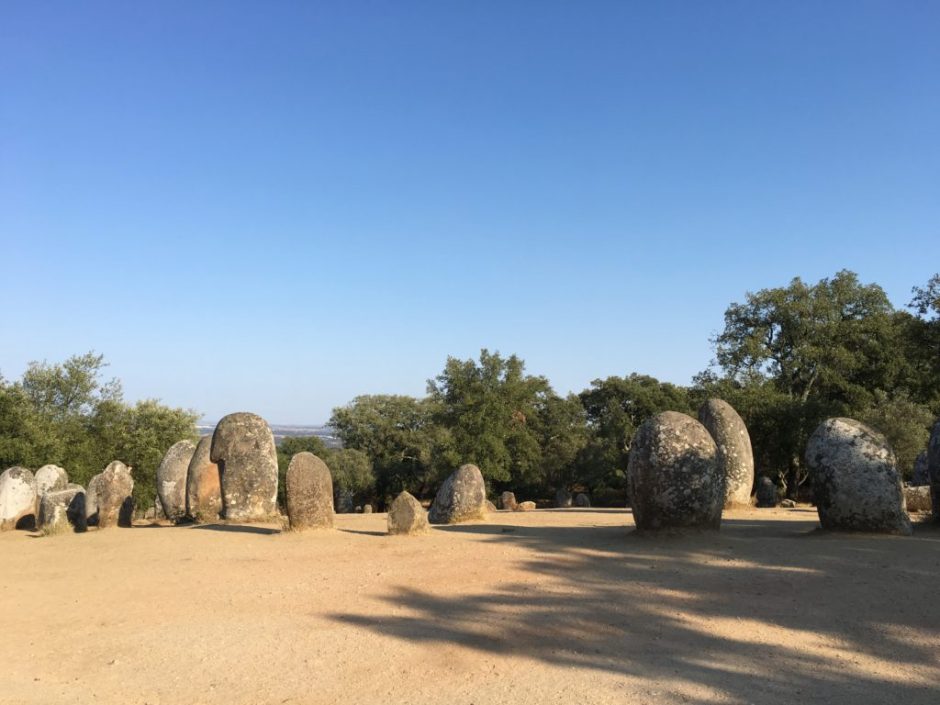We saw our first megalith in Lisbon’s Museum of Archeology and we were intrigued. What were these stones with their strange markings? Where could we see more of them? It turns out the largest collection of megaliths on the Iberian peninsula is located less than two hours from Lisbon in the Alentejo region not far from Evora, the area’s capital city.

Drive in the direction of Nossa Senhora de Guadalup through the beautiful forests of cork oak trees to reach Almendres Cromlech.
There are numerous places to see megaliths in Portugal, many in the Alentejo, but Cromeleque dos Almendres, or Almendres Cromlech, is the largest and most prominent site. Older than Stonehenge, Cromeleque dos Almendres is located about seven kilometers off the main road, the N114, driving towards Evora from Lisbon. We were heading to the Evora after Lisbon and decided to include a stop to see these archeological wonders.
Head in the direction of Nossa Senhora de Guadalup through the beautiful forests of cork oak trees. The dirt road is clearly marked with signs–Cromeleque dos Almendres and Menhir dos Almendres– directing you to the site. You will either need a car or a taxi to get here. There is no public transportation available.
About 95 of the granite megaliths, also called menhirs, still stand in the area and date back to the Neolithic Period (4th and 5th century BC). The stones at Almendres Cromlech are arranged to form two rings and visitors are free to wander all around the area, though touching the stones is discouraged.
It is believed that the earliest stones were placed here in 6000 BC and that ancient peoples used the area at Almendres Cromlech until 3000 BC for religious purposes. There is still a great deal of mystery surrounding the purpose of the stones, their placement and the markings on them, but there is speculation that the site had astrological significance due to its latitudinal location.
There is a map of the enclosure on site, which identifies particular menhirs and describes various markings on the different stones.

Helpful signs in English and Portuguese explain the history of Almendres Cromlech and a map of the area shows where the most important stones are located.

A careful examination is required to see the ancient markings on many of the stones. Here’s a close up look at one.
We chose to take a self-guided exploration of the area but guided tours can be arranged. We met a Canadian couple that had hired a tour company to take them out to Almendres Cromlech and explain the mysteries of this ancient site and they thoroughly enjoyed their visit. Admission to the site is free and there is plenty of parking.








